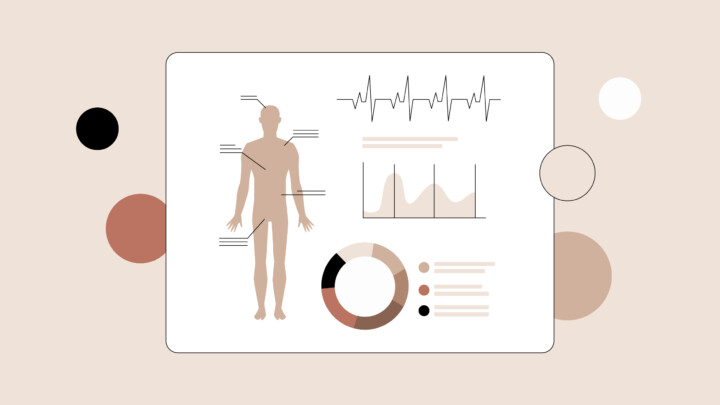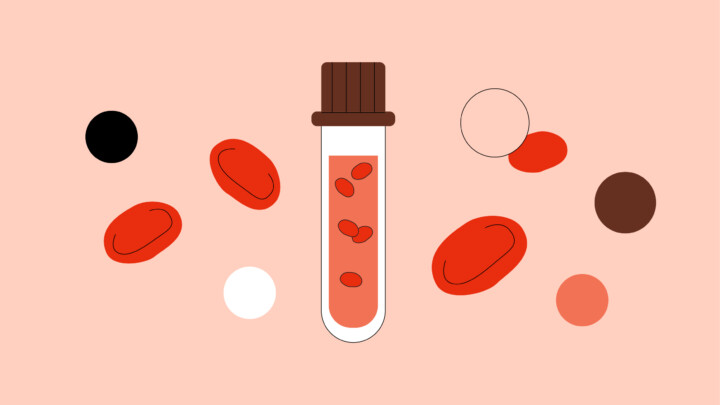
Unconscious prejudices may shape how you interact with patients without you even realizing it. Implicit bias — automatic mental associations about people based on their appearance, background or identity — can influence clinical decisions.
Implicit bias doesn’t mean you aren’t dedicated to patient care. Still, addressing it is a critical step toward treating all patients with equal compassion. This guide explores how these unconscious biases manifest in healthcare settings and provides strategies for doctors to help reduce the impact on patient outcomes.
What is implicit bias in healthcare?
Implicit bias refers to the unconscious attitudes, stereotypes and associations that automatically influence your perceptions and behaviors.
Unlike explicit prejudice, which involves deliberate discriminatory thoughts or actions, implicit bias operates without your awareness, but it can still affect your decision-making processes. “The principle of justice implies treating all patients equally; however, it is true that social stigmas can unconsciously affect the treatment our patients receive, especially if they are social minorities,” explains a general practitioner on Sermo.
These unconscious associations develop through lifelong exposure to cultural messages, media representations and societal stereotypes. Your brain naturally categorizes information to process complex environments efficiently, but this same mental shortcut can lead you to make assumptions about patients based on their race, gender, age, sexual orientation, weight or socioeconomic status.
The healthcare setting presents unique challenges for implicit bias, since time pressures and high-stakes decisions may make you more likely to rely on these automatic mental processes. “Often, without realizing it, healthcare professionals may make decisions based on stereotypes related to a patient’s race, gender, or socioeconomic status, which can affect the quality of diagnosis, treatment, and empathy in care,” writes another general practitioner on Sermo.
A geriatrician adding to the conversation emphasized a need for physicians to reject their implicit biases. “Our obligation in daily practice must be focused on the attention and care of our patients and prevent any factor that is not related to their illness from influencing decisions related to their diagnosis and treatment,” they write.
The impact of implicit bias on patient care
Research demonstrates that implicit bias significantly affects healthcare delivery, contributing to documented disparities in patient outcomes. Physicians on Sermo have also noticed an impact. In a poll, 51% of voters said implicit bias occasionally affects how patients are treated, and another 34% said it frequently makes an impact.
Racial and ethnic minorities face bias-related disparities in healthcare. For example, studies demonstrate that Black patients receive less pain medication for equivalent conditions, experience longer emergency department wait times and are less likely to be referred for specialized procedures. In a Sermo poll wherein members chose which group is most affected by implicit bias, racial and ethnic minorities was the most common answer, with 33% of votes.
Women represent another population significantly affected by implicit bias. Research reveals that women’s pain is often underestimated or dismissed. Women are also less likely to be prescribed pain medication than men, and may face longer diagnostic delays for conditions like heart disease, which have historically been studied primarily in male populations.
12% of respondents in the Sermo poll believe LGBTQ+ patients are most affected by implicit bias in healthcare. Many healthcare providers lack training in LGBTQ+ health issues, and unconscious assumptions about sexual orientation or gender identity can lead to inadequate or inappropriate care.
Age-related bias also affects healthcare. For example, older adults may have their symptoms attributed to normal aging rather than treatable conditions, while their cognitive abilities and autonomy may be underestimated.
The cumulative effect of these biases can create compounding disadvantages for patients who belong to multiple marginalized groups. An older, Black woman, for example, may face a combination of racism, sexism and ageism that profoundly affects her healthcare experience.
Examples of implicit bias in healthcare
Implicit bias manifests in healthcare in various ways. In a poll, Sermo members most commonly said that it occurs in diagnosis and testing decisions or pain management and prescribing (both receiving 28% of the vote) followed by time spent with patients (27%). These are some examples of ways that implicit bias can affect patients:
Patients’ concerns are ignored due to their weight
Healthcare providers may automatically attribute all symptoms to a patient’s weight, leading to missed diagnoses and delayed treatment.
Research shows that patients with obesity may avoid seeking care due to anticipated stigma. A GP on Sermo considers this one of the groups most commonly affected by implicit bias, saying, “I think there is more implicit bias in 1.- patients with psychiatric disorders, 2.- Poor people or uneducated, 3.- Obese patients, 4.-Patients with disabilities, 5.- Lgbtq patients, 6.- Ethnic minorities”.
Low-income patients are seen as irresponsible
Socioeconomic bias can lead healthcare providers to make assumptions about patient motivation, compliance and health behaviors. Lower-income patients may be viewed as less intelligent or less likely to adhere to treatment plans.
These assumptions can become self-fulfilling prophecies, as patients who feel judged may be less likely to ask questions or return for follow-up care. The resulting poor health outcomes then reinforce stereotypes about “non-compliant” patients, where in reality these patients may face compliance challenges due to their environment or some other factor at play.
Trans people face barriers to care
Transgender patients face unique challenges including provider discomfort, lack of knowledge about transgender health needs and discrimination. Many healthcare providers have never received training in transgender health, leading to inappropriate questions or misgendering.
Assumptions about transgender patients’ bodies or treatment needs can result in inadequate care. The fear of discrimination often leads transgender patients to delay or avoid seeking healthcare, resulting in poorer health outcomes.
A GP on Sermo called on fellow physicians to address the biases that may be affecting their day-to-day practices. “Let’s remember that in the medical field, all people are the same, prejudices should be left outside hospitals, in a health home because everyone deserves the same treatment and the same respect, the same medical care, for that we train as doctors,” they write.
Strategies for recognizing and reducing implicit bias
Sermo data reveals that many physicians haven’t received formal training on identifying and addressing implicit bias in clinical care. In a poll, 42% of members said they haven’t received training but would be open to it, 23% attended a one-time session, and only 27% said they’ve received multiple sessions. In the same poll, 31% said they thought more practical, case-based training would best help them recognize and reduce implicit bias.
Whether you’ve never received training or could use a refresher, the I.M.P.L.I.C.I.T. framework provides a comprehensive approach to bias reduction that you can implement in your daily practice.
Introspection
Introspection forms the foundation of bias reduction. This involves honest self-examination of your own attitudes, assumptions and reactions to different patient populations. Try to identify patterns in how you respond to different types of patients. Consider keeping a brief journal noting any moments when you found yourself making quick assumptions about a patient or when your emotional response to a patient seemed disproportionate.
It’s an impactful measure, according to one GP on Sermo. “Incorporating small strategies, like self-reflection and active listening, can make a big difference in the trust we build and the outcomes we obtain,” they shared.
Mindfulness
Mindfulness involves cultivating present-moment awareness during patient interactions. When you’re mindful, you’re more likely to notice your automatic thoughts and reactions before they influence your behavior. Practice taking a brief pause before entering each patient room to center yourself and approach the encounter with fresh awareness. An OBGYN on Sermo recommends the approach, writing that “making a conscious effort to reflect on one’s thoughts and actions can help reduce its influence”.
Perspective-taking
Actively try to understand patients’ experiences from their viewpoint. This involves considering how a patient’s identity, background or circumstances might affect their healthcare experience.
A GP on Sermo thinks it’s sometimes useful to consider how you’d feel if the patient was one of your family members. “I think it is always important to be aware of our bias, trying to remember how you’d feel if that person was your relative is useful but also knowing when to take a step back is equally important,” they recommended.
Learn to slow down
Challenge the time pressures that often exacerbate biased thinking. When possible, take extra time with decision-making, especially for complex cases or when you notice yourself making rapid judgments.
Individuation
Focus on seeing each patient as a unique individual rather than as a member of a particular group. Make a conscious effort to learn specific details about each patient’s life, concerns, and preferences. Use their name frequently, and refer to specific aspects of their situation rather than general categories.
Check your messaging
Examine both your verbal and non-verbal communication for bias. Pay attention to differences in your tone, body language or word choice with different patients. Consider whether you’re providing the same level of information and encouragement to all patients.
Institutionalize fairness
Implement systematic practices that reduce opportunities for bias to influence care. This might include standardized assessment tools, structured interview formats or regular review of treatment patterns across different patient populations.
Take two
Seek second opinions or consult with colleagues when making important decisions. This is particularly valuable when treating patients from groups you may have less experience with or when you notice strong emotional reactions to a patient. 26% of polled Sermo members said peer discussion would best help them address implicit bias in their practice, and communities like Sermo can help you to identify your own biases and discuss complex patient cases with peers.
Building a more equitable future in medicine
Unconscious biases contribute to health disparities that undermine physicians’ commitment to providing excellent care to all patients. The journey toward bias reduction begins with honest self-examination and continues through deliberate practice of awareness-building techniques. The I.M.P.L.I.C.I.T. framework provides a practical roadmap.
Remember that implicit bias affects everyone — it’s a product of human psychology and social conditioning, not personal character flaws. The goal isn’t to eliminate all unconscious associations, which would be impossible, but rather to develop the awareness and skills needed to prevent them from compromising patient care.
The medical community has a unique opportunity to contribute to a more just and equitable healthcare system by addressing societal biases. The Sermo community provides a safe and supportive space to discuss challenging topics like implicit bias and share experiences and insights. Your voice and experience matter in this important conversation. Let it be heard.















